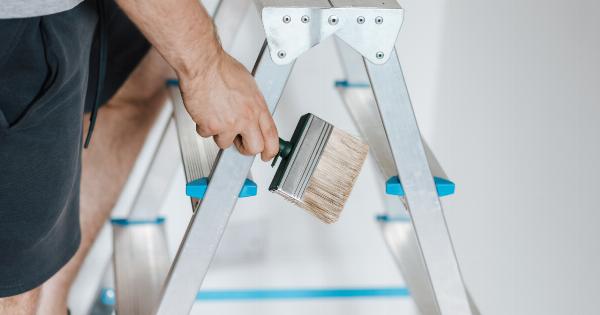Incontinence can be a challenging and embarrassing condition that affects millions of individuals worldwide.
Whether it is due to age, childbirth, injury, or an underlying medical condition, dealing with incontinence requires understanding, patience, and effective strategies. This comprehensive handbook aims to provide valuable insights, practical tips, and expert advice to help individuals tackle incontinence and regain control over their lives.
Understanding Incontinence
In order to effectively manage incontinence, it is crucial to first understand what it is and the various types and causes. Incontinence refers to the involuntary loss of urine or feces, which can range from mild leakage to complete loss of control.
The commonly identified types of incontinence include stress incontinence, urge incontinence, overflow incontinence, mixed incontinence, and functional incontinence. Each type has different causes and requires specific management techniques.
Identifying the Causes
The causes of incontinence can vary greatly from person to person. Some common causes include weakened pelvic floor muscles, nerve damage, hormonal changes, urinary tract infections, prostate enlargement, childbirth, and certain medications.
Identifying the underlying cause is essential for developing an effective treatment plan and managing incontinence successfully.
Seeking Professional Help
If you or a loved one is experiencing incontinence, it is vital to seek professional help. Consulting a healthcare provider, such as a doctor or a specialist urologist, can help diagnose the exact cause and provide personalized treatment options.
They may conduct a physical examination, analyze medical history, order tests, and suggest lifestyle modifications or medical interventions to address the issue.
Lifestyle Modifications
In many cases, simple lifestyle modifications can significantly improve incontinence symptoms.
These modifications may include dietary changes, such as avoiding bladder irritants (caffeine, alcohol, spicy foods), maintaining a healthy weight, regular exercise to strengthen pelvic floor muscles, quitting smoking, and practicing bladder training techniques. Understanding and implementing these lifestyle changes can make a remarkable difference in managing incontinence effectively.
Medical Interventions
Depending on the severity and underlying cause of incontinence, medical interventions may be necessary. These interventions can range from medications to surgical procedures.
Medications such as anticholinergics, alpha-blockers, topical estrogen, or nerve stimulators can be prescribed to relieve symptoms and manage incontinence. In severe cases where lifestyle modifications and medications prove ineffective, surgical interventions like sling procedures, urethral bulking agents, or artificial urinary sphincters may be recommended.
Psychological and Emotional Support
Incontinence can significantly impact an individual’s emotional well-being and quality of life. It is essential to address the psychological aspects of living with incontinence and seek appropriate support.
Joining support groups or seeking counseling can provide individuals with the opportunity to share experiences, learn coping strategies, and gain emotional support from others who understand their challenges. Additionally, practicing relaxation techniques, mindfulness, and engaging in activities that bring joy and fulfillment can also contribute to overall emotional well-being.
Incontinence Products
There is a wide range of incontinence products available in the market that can help manage symptoms discreetly and comfortably. These include adult diapers, pads, protective underwear, and bed pads.
Understanding the different types of products, their features, and selecting the appropriate one can significantly enhance comfort and confidence while dealing with incontinence.
Caring for Skin
Incontinence can increase the risk of skin irritation, rashes, and infections due to prolonged contact with moisture. It is crucial to maintain good skin hygiene and take steps to prevent skin problems.
This involves frequent cleansing with mild soap and water, applying barrier creams or ointments to protect the skin, keeping the perineal area dry, and carefully managing any existing skin conditions. Seeking advice from healthcare professionals or dermatologists can provide personalized guidance based on individual needs.
Managing Incontinence at Work and During Travel
Dealing with incontinence at work or during travel can be particularly challenging. However, with proper planning and preparation, individuals can successfully manage such situations.
It is important to communicate discreetly with employers or colleagues about the condition, identify restroom locations in advance, make necessary accommodations, and carry a discreet bag containing required incontinence products, spare clothing, and personal hygiene items while traveling.
Support from Caregivers
Incontinence can have a significant impact on the lives of both individuals experiencing it and their caregivers. It is crucial for caregivers to understand and empathize with the challenges faced by their loved ones.
Providing emotional support, offering assistance with daily activities, assisting with medication management, and facilitating access to healthcare professionals can greatly contribute to the overall well-being and comfort of individuals dealing with incontinence.
Living a Fulfilling Life
It is important to remember that incontinence does not define a person’s worth or limit their ability to enjoy life to the fullest.
By implementing appropriate strategies, seeking support, and maintaining a positive mindset, individuals with incontinence can continue to engage in activities they love, pursue their goals, maintain healthy relationships, and lead a fulfilling life.
Conclusion
Tackling incontinence is a multi-faceted process that involves understanding the condition, addressing the underlying causes, seeking professional help, making lifestyle modifications, utilizing medical interventions when required, finding emotional support, and maintaining good hygiene. By following the advice and strategies provided in this comprehensive handbook, individuals can effectively manage incontinence and regain control over their lives.





























